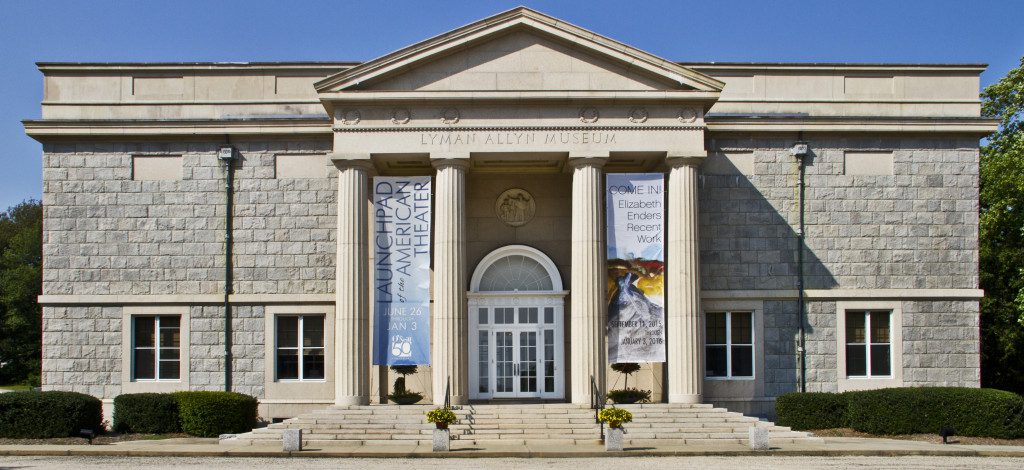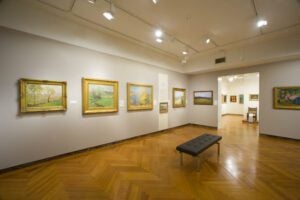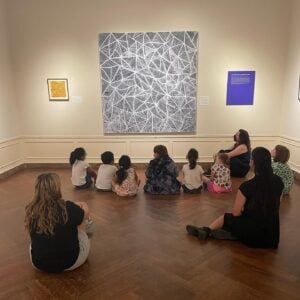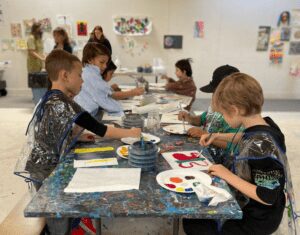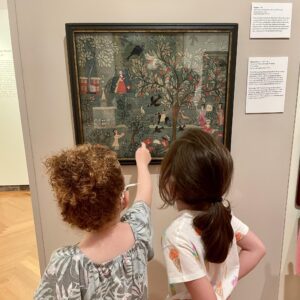Through November 30, 2009
Guest Curator Zina Davis, Joseloff Gallery at the University of Hartford
Language is incorporated into works of art in ways that encourage us to consider the meaning of words and symbols in relation to the visual experience. Sometimes the viewer must look closely to find the words and symbols: in some artworks, the symbols are hidden, scattered throughout the patterns on the paper, while in others text plays a prominent role.
Words and symbols are frequently found in contemporary art; however, there is a strong precedent for works of art that integrate text with image before the 20th and 21st centuries. Language plays a dominant role, for example, in early American samplers; medieval illuminated manuscripts and Farsi marriage documents. All were intended to be read.
Other examples of the early inclusion of text and symbols are a 19th century Chinese bronze ritual vessel and an ancient Egyptian falcon mummy sarcophagus which, along with two ushabti figures, are painted with hieroglyphic inscriptions. Antique Greek red-figure pottery features abstract symbols and as well as symbolic mythological figures relating stories and relaying information that would have been easily “readable” by the people who used these objects. Language is seamlessly integrated into these art objects and the result is a unity of aesthetic and purpose.
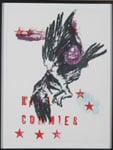
Kill Commies, 1988
Color Lithograph
![Harmony Hammond The Fold [Pink] Monoprint 25.5 x 19.5”, 1981](https://www.lymanallyn.org/site/wp-content/uploads/2013/06/2008Hammond-Pink-Fold..jpg)
The Fold [Pink]
Monoprint
25.5 x 19.5”, 1981

